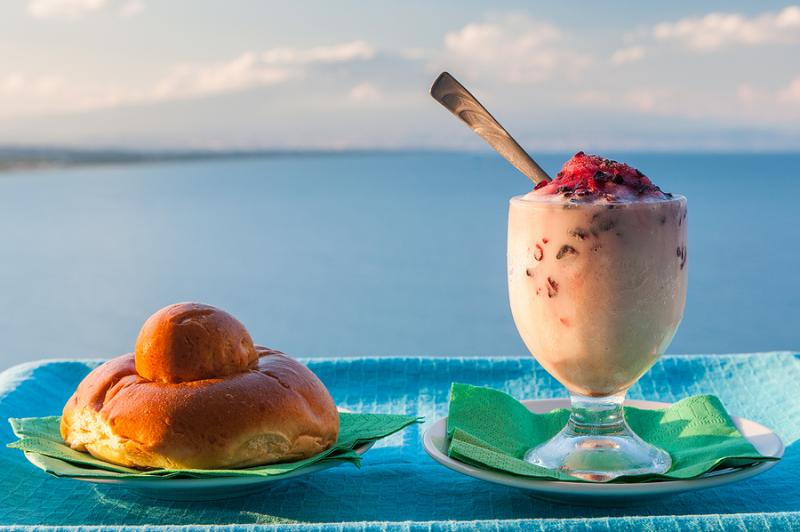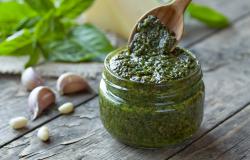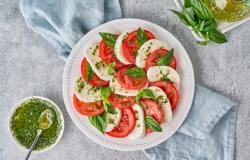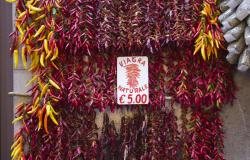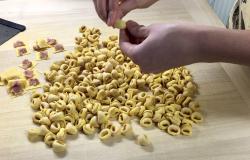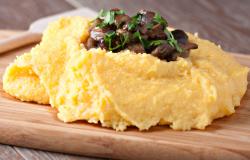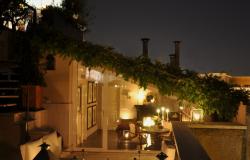When temperatures soar (and they do soar in Italy in summer - at times almost unbearably because of the combination of heat and humidity), what’s better than cooling off with an Italian frozen treat?
There are many refreshing cool sweets and drinks in Italy to choose from when you need some respite from the heat and a midday break; some can even work as meal substitutes, while others are best enjoyed post-dinner.
Let’s look at Italy’s top frozen treats.
Granita

Che caldo! It’s the perfect time for granita. Falling halfway between a gelato to eat with a spoon and a beverage to drink with a straw, granita is a summer must, a semi-frozen liquid made with water, sugar and a fruit juice or other ingredients like almond milk, coffee or chocolate.
Unless you are in Sicily, land of delicious almond and coffee granita, dense and rich almost like gelato, granita risks being a glass of crushed ice and sugary fruit-flavored syrups, with lots of preservatives and dyes and very little flavor.
So how do you recognize a good granita? First of all, observe the texture: granita does not have ice crystals as large as the Roman grattachecca (see further down below), but they are present and you can feel them with your tongue. Granita should be creamy but compact, not liquid and soft like a sorbet.
Fruit granita should be made with real fruit and its color look natural; stay clear of those displaying fluorescent colors.
- Want to know more? Read our story about Sicilian granita.
Sorbetto

So what’s the difference between sorbet and granita?
If you ask a Sicilian, they’ll tell you real granita can be found only in Sicily. Anywhere else you have to call it something else.
Sorbet is a cold dessert made from water, sugar, fruit pulp or fruit juice, sometimes with the addition of wine or liqueur. Considered the precursor of fruit gelato, sorbet is a semi-dense preparation. The classic sorbets to enjoy at the end a meal are lemon and coffee; some restaurants will offer them in a flute to be drank with a straw; others in a cup to be eaten with a spoon. In elaborate meals, lemon sorbet is used as an interlude between courses.
The origins of sorbet are ancient: during the 11th century, the Arabs developed “shrb”, or sugar syrup, a base for making fruit sorbets, medical herbs, spices and flowers, the predecessor of sorbet, which became very popular in Sicily when it was under Arab rule; the Arabs grew as many as 400 different types of flowers to flavor their sorbets. The sorbet was not born as a dessert, but rather as a thirst-quenching drink.
Gelato (and Focaccia con Gelato)

So then, what’s the difference between gelato and sorbet?
There is a fundamental difference: the base for gelato, unless it’s a fruit gelato, is milk, while the sorbet is mostly composed of fruit, water and sugar.
Artisanal gelato is less fat, contains less air and it's served at a higher temperature than industrial ice-cream. These factors give gelato a creamier and smoother texture and a much richer taste.
If you've been in an Italian gelateria, you'll have noticed that the counter is usually divided into two areas, one for the ‘creme’ flavors, such as chocolate, hazelnut, crema and bacio, and one for ‘frutta’ flavors, fruit-flavored gelato, such as lemon, strawberry, melon and peach. The main difference between the two types of flavors is the use of milk, cream and eggs, which are added in the first type of gelato; fruity flavors are very popular in the summer time because they're fresher and lighter.
Gelato can easily substitute a meal, especially if eaten with focaccia - this is something you must try at least once when visiting Italy in summer! It is so delicious and filling. Brioche con gelato is a summer sweet typical of Sicily, where you’ll find the classic brioche con tuppo; everywhere else is focaccia, and it works the same way, a sweet buttery bread sliced in half and stuffed with gelato (or, in Sicily, granita).
- Read our foodie guide to gelato.
Affogato

Affogato uses gelato for its base, but in this case there is also the need for a liquid or dense ingredient, such as coffee or melted chocolate, because the gelato must be “drowned” - affogato, that is.
The most classic is affogato al caffè, where usually fior di latte or crema are topped with a shot of espresso, and perhaps a bit of whipped cream; it is usually eaten at the end of a meal.
But you can pretty much pair it as you like, choosing gelato flavors and toppings that you like, although the most classic are coffee and chocolate. You could even use caramel or fruit in alcohol or in syrup, such as black cherries or berries or even an alcoholic ingredient, such as rum (excellent with dark chocolate), or brandy.
The hot ingredients should be added to the gelato when they have become lukewarm, so as not to melt it too quickly.
Semifreddo

As the name implies, semifreddo is a ‘semi-cold’ dessert typical of Italian cuisine. It’s creamy, soft, velvety, halfway between mousse and gelato, but definitely not light; compared to gelato, semifreddo has a higher load of sugars, as well as fatty and aromatic substances, while it contains less water than gelato, and is therefore drier and thicker.
Semifreddo is made with eggs, sugar, cream and, depending on how you want it flavored, nuts, fruits, nougat, vanilla, chocolate, or crema pasticcera.
Grattachecca

When in Rome, try grattachecca! It’s a cold dessert originating in Rome, commonly sold in kiosks and bars. It’s a refreshing mix of ice and fruit.
The name comes from the verb ‘grattare’ (to scratch) and ‘checca,’ a term that in Roman dialect indicated the block of ice used to keep food and drinks cool when refrigerators did not exist.
A glass is filled with ice flakes and then fruit syrups or juices are added, and sometimes even pieces of fresh fruit.
The thirst-quenching combination of ice munched with your teeth and fruity syrup is a summer pleasure not to miss in Rome; you start enjoying it with a spoon and end with a straw.
Limoncello

Not properly a frozen treat, Italy’s favorite liqueur is a classic of summer, perfect to close a meal. Limoncello requires only four ingredients: lemon peels, grain alcohol, sugar, and water. The best, needless to say, is the one made following the traditional recipe, using lemons from the Amalfi Coast. Taste and quality can indeed vary widely.
Limoncello should be served in a chilled glass, and often times the restaurant will offer it for free at the end of a meal.
- Interested in more? Read our guide to buying limoncello on the Amalfi Coast.
